Hand hygiene plays a key role in the control and diffusion of infectious diseases, bacteria, viruses and multi-resistant parasites. Some microorganisms that lurk on the skin can cause disease or can be dangerous to the human body, especially if they subsequently get in contact with the food we eat, the mouth, or the nose. Simply washing hands with soap and water can greatly reduce the spread of any diseases and bacteria. A crucial but often underestimated step in the handwashing process is drying. Complete hand drying is critical to maintaining hygiene standards: wet hands, in fact, can transmit up to 1,000 times more bacteria to the surfaces they touch. Drying hands hygienically is as important as washing them, because the most resistant bacteria and viruses deposited by hands on surfaces can survive for many hours. The hand drying step can be done by paper or by air; two totally different methods. The question to ask is:
WHAT HAPPENS WHEN WE DRY OUR HANDS WITH A PAPER TOWEL OR WITH AN ELECTRIC AIR DRYER?
In recent years there have been numerous studies focused on analyzing the benefits of hand hygiene and the effectiveness of different detergents, but there are very few studies and insights into the different contribution that proper drying makes to complete hand hygiene. A study conducted by the European Tissue and Paper Association (ETS) in collaboration with the University of Westminster found that using paper towels reduces bacteria by an average of 42 percent, while using electric hand dryers promotes a 50 percent increase in bacteria. Air is therefore shown to be a vehicle for the transmission of bacteria. It is well known among microbiologists that air movement encourages the dispersion and transmission of microorganisms by increasing the probability of contamination of materials or people. Previous studies (Blackmore, 1989. Knights et al., 1993; Redway et al., 1994) have even shown that the interior surfaces of air dryers can also be subject to bacterial contamination. Bacteria can be transferred through emitted air streams and can be deposited on the hands of people using them or transmitted through the air to all people using a public toilet. Therefore, paper towels, which generate virtually no small air movement, can be considered the most hygienic of drying methods.
The study conducted by ETS points out that the paper towel emerges as the most hygienic method of hand drying. Therefore, it becomes evident that in order to ensure an appropriate level of hygiene within public places, such as within hospitals, clinics, nurseries, nursing homes, kitchens and other food preparation areas, where hygiene is of primary and fundamental importance, the choice of installing paper towel dispensers instead of air dryers is definitely a winning one to ensure adequate hygienic performance.

While it is true that as demonstrated, using paper to dry hands after washing reduces the risk of contamination by 42% compared to using air dryers, it is also true that if this paper is not hygienically controlled, the possibility of coming into contact with pathogens is still high.
IF DRYING YOUR HANDS WITH THE PAPER WE FIND IN DISPENSERS IS NOT TOTALLY HYGIENIC AND AIR DRYERS EVEN PROMOTE THE INCREASE OF BACTERIA ON YOUR HANDS, IS THERE A 100% SAFE SOLUTION?
The answer is YES! Our DEFENDO® line of products are all treated with Eco Silver Paper® technology and are fully defended and hygienic. The Eco Silver Paper® active ingredient, thanks to stabilized silver ions, provides resilient antibacterial activity for up to three years after production! This is a unique feature in the market that allows us to offer an innovative product certified as antibacterial. In addition, products treated with this technology respect the natural pH of the skin and are all dermatologically tested. Eco Silver Paper® validated technology and analytical controls allow us to ensure the stated properties for each production batch. The ideal product for drying hands and reducing the risk of contamination to 0 are our Defendo® interfolded towels!
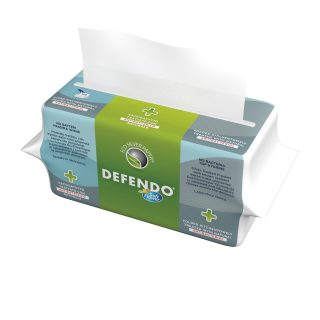

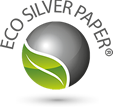

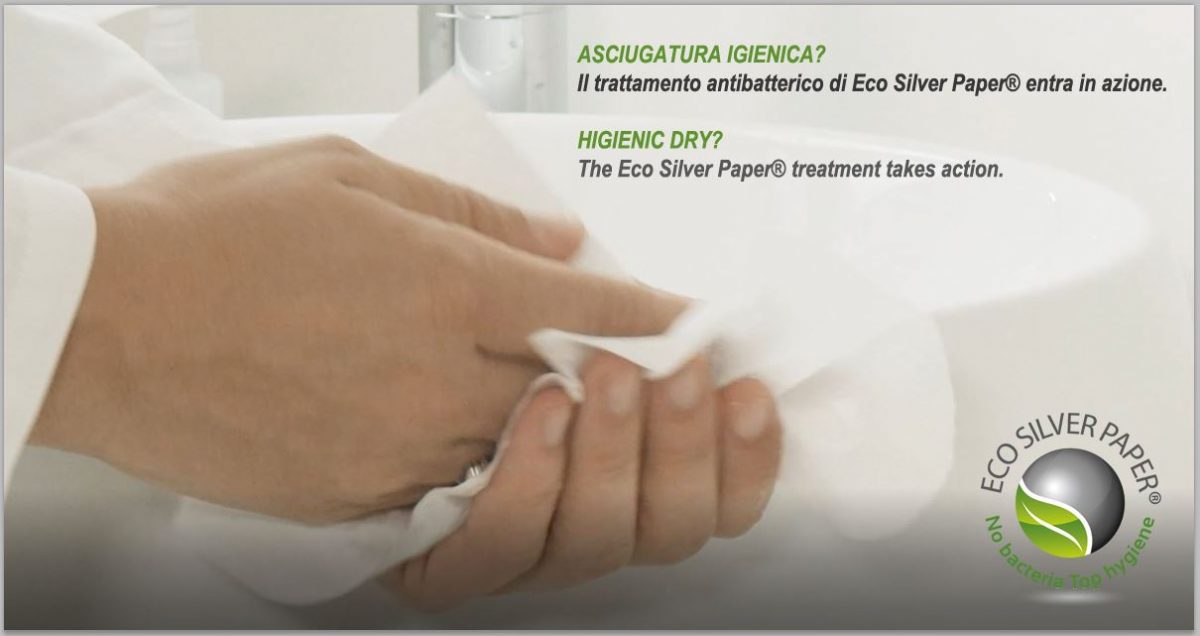
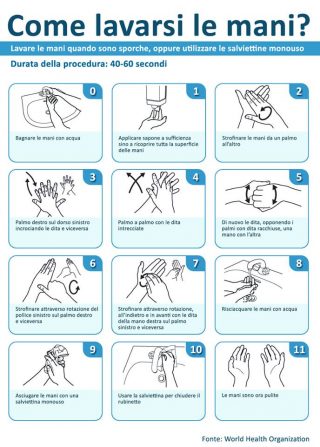
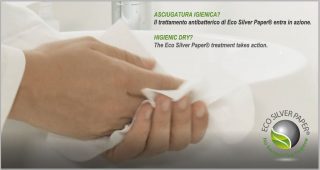
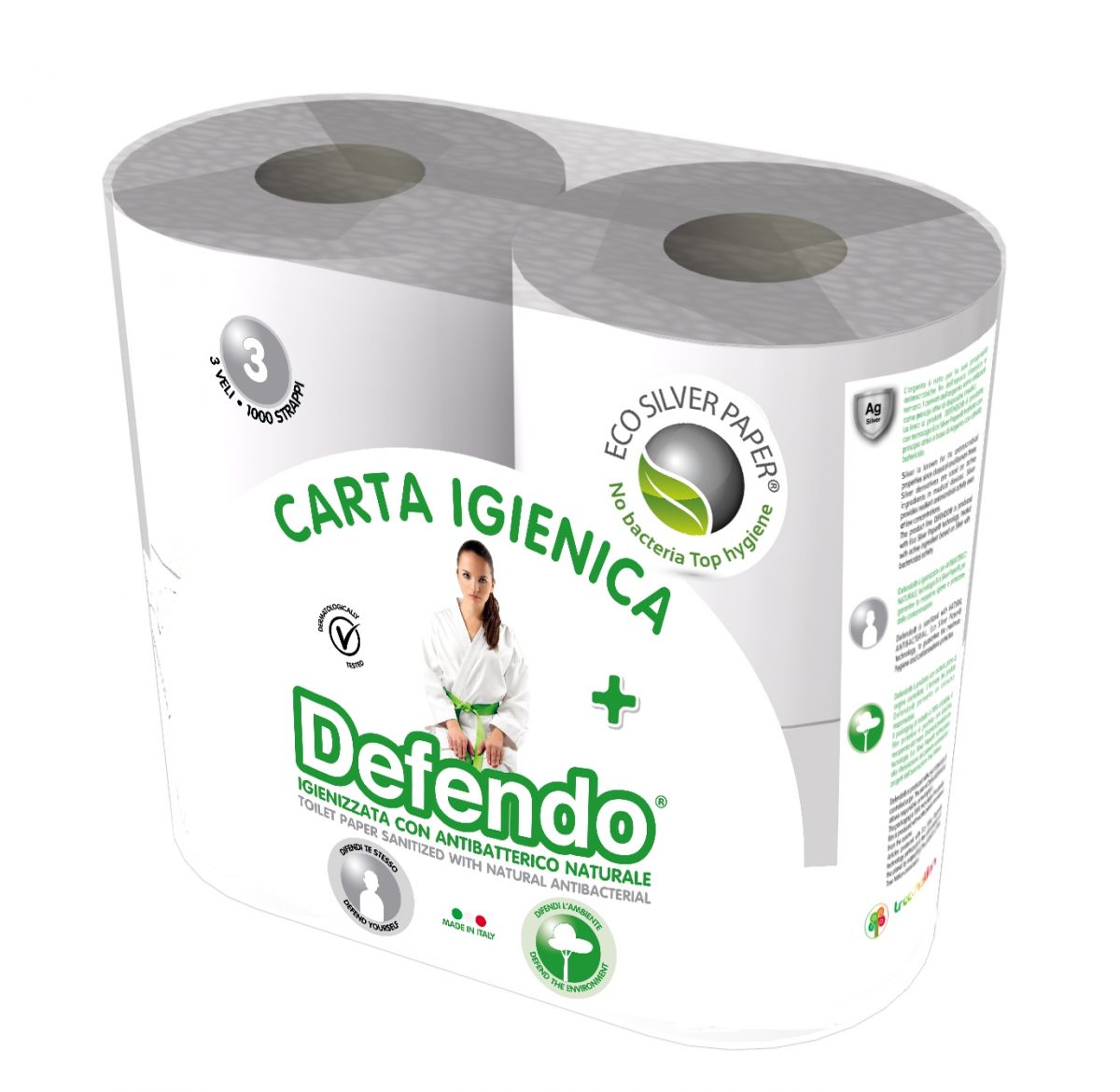

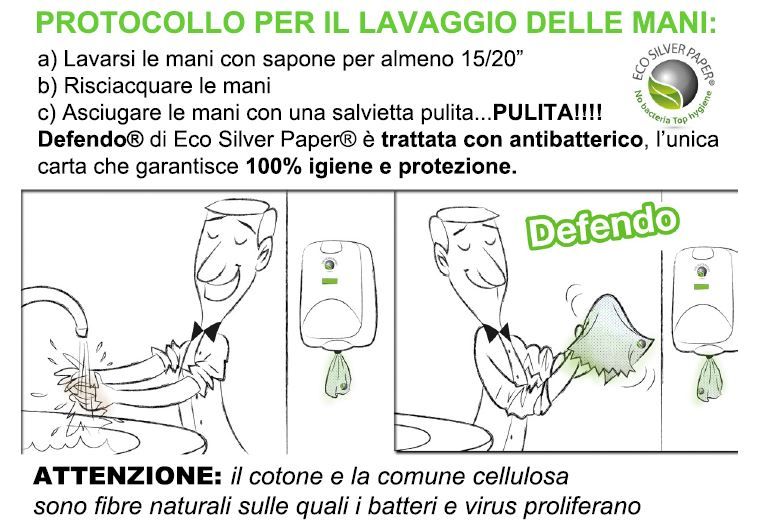

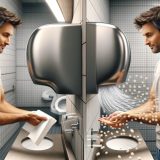
LATEST COMMENTS